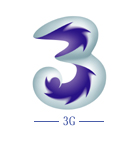 When I the create the post, To iPhone 3G S or Not?, I was not able to enable the MMS function on my iPhone 3G.
When I the create the post, To iPhone 3G S or Not?, I was not able to enable the MMS function on my iPhone 3G.
Before I explain how to enable MMS on an iPhone 3G running the iPhone 3.0 firmware, let me explain my context.
My iPhone 3G is the officially “SIM unlocked” version of the iPhone 3G directly from Apple Online Store Hong Kong. It capacity happens to be a 16GB version. I installed the iPhone 3.0 firmware “Golden Master” version onto my iPhone.
The following applies to any carrier situations, no matter whether the carrier in question is an official carrier partner with Apple in the country.
[Update: 12:10, June 18, 2009]
Added MMS settings for PCCW. Please note that these settings had not been tested on the iPhone. Please leave a note in the Comment section if you’re a PCCW customer and tried it on your iPhone 3G.
[Update: 13:01, June 18, 2009]
Thanks to reader Jon for pointing out the typo in the MMSC for Smartone-Vodafone.
[Update: 14:01, June 18, 2009]
I just received some news from Smartone-Vodafone that contradicts the information I received from them in two separate occasions, which is the fact that they do not charge their customers for receiving MMS.
The latest information is that they will charge HKD0.04/KB; a maximum of HKD12.00/MMS, to receive MMS.
This comes back to my original point I always had with MMS, the technology will not get wide adoptions and acceptances by consumers until the carriers remove these ridiculous pricing.
I for one will not use it!
I encourage all to not use it and ensure you do not pay the fees to show our disgust.
[Update: 17:11, June 18, 2009]
Thanks to reader Karay who pointed to a person calling himself “markmall_hk” on UWants.com, I have now updated the MMS settings for all mobile carriers in Hong Kong.
[Update: 01:10, June 20, 2009]
Added settings for CTM in Macau.
[Update: 01:20, June 20, 2009]
Thanks to reader Niels for the China Unicom 3G settings in mainland China.
[Update: 01:30, June 20, 2009]
Thanks to reader Ju for confirming the settings for PEOPLE.
[Update: 15:10, June 20, 2009]
Thanks to reader Todd for confirming the settings for CSL
[Update: 22:00, June 23, 2009]
Thanks to the folks at iPhoneHacks.com we now have a set of instructions for our US friends who are stuck with AT&T.
[Update: 12:15, June 24, 2009]
Thanks to reader Filipe for supplying the settings for CTM Macau non-prepaid SIM card customers.
[Update: 16:00, June 25, 2009]
I just double checked Smartone-Vodafone’s web site and it clearly states that “3G SmarTone-Vodafone customers” can receive MMS for FREE.
So I do not understand why the previous Customer Service representative claims that I have to pay the HKD0.04/KB when I clearly told her that I was on a 3G plan, plus she had my account opened in front of her.
[Update: 12:00, June 26, 2009]
Added the instructions to enable to the “Cellular Data Network” option within the Network settings pane.
 In technology we are use to dealing with the chicken and egg scenario. Where one technology break through cannot happen until another happens.
In technology we are use to dealing with the chicken and egg scenario. Where one technology break through cannot happen until another happens.















 Early this year both PCCW and CSL launched their
Early this year both PCCW and CSL launched their  When I the create the post,
When I the create the post,